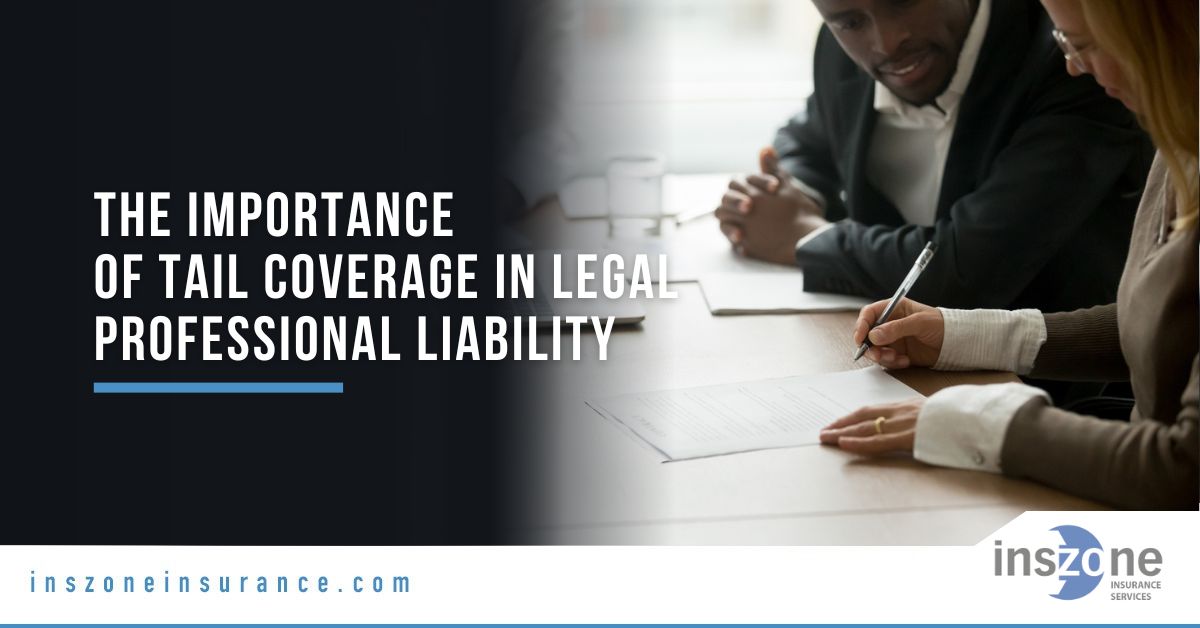Legal professionals navigate a complex landscape, balancing client advocacy, adherence to the law, and ethical obligations. Yet, even with the utmost diligence, attorneys face the inherent risk of professional liability claims. Professional liability insurance, also known as errors and omissions (E&O) insurance, is essential to safeguarding attorneys and law firms from claims of negligence, malpractice, or oversight. One critical, yet often overlooked, aspect of this protection is tail coverage.
Tail coverage, technically known as an extended reporting period (ERP), is an essential component of professional liability insurance. It provides protection for claims reported after a policy has ended, as long as the alleged incident occurred during the active period of coverage. In simpler terms, tail coverage allows attorneys to report claims after the original policy expires, ensuring they remain protected from liabilities related to past services.
Why Tail Coverage Matters
Legal malpractice claims typically do not surface immediately. They may arise months or even years after an attorney’s work concludes, particularly in cases involving complex litigation, intricate contract negotiations, or estate planning. Without tail coverage, attorneys would face significant financial exposure if claims arise after their professional liability policy ends.
Tail coverage becomes especially crucial during career transitions, retirement, or firm dissolution. For instance, an attorney retiring from practice remains vulnerable to lawsuits stemming from previous legal services. Without tail coverage, that retired attorney would have to bear the costs of defense and potential damages entirely out of pocket.
When is Tail Coverage Needed?
One common scenario necessitating tail coverage occurs when attorneys change firms or retire. Standard professional liability policies typically operate on a claims-made basis, meaning they only provide coverage if both the alleged incident and the claim itself occur while the policy is active. Upon leaving a firm or retiring, attorneys should secure tail coverage to protect themselves from any claims related to their past work, filed after their policy ends.
Additionally, when law firms merge, split, or dissolve, tail coverage is essential to cover potential future claims tied to legal work performed prior to the organizational change. Without adequate tail coverage, former partners or associates may find themselves personally liable for claims arising from their previous firm’s activities.
Understanding Claims-Made Policies
Professional liability insurance policies are typically issued on a claims-made basis. This structure significantly differs from occurrence-based policies, which cover any incident occurring during the policy period, regardless of when the claim is filed. Claims-made policies, on the other hand, require that the policy be active both when the incident occurs and when the claim is reported.
Therefore, tail coverage is vital to extend reporting periods and bridge the gap between policy expiration and claim reporting. Attorneys need to be aware that failing to secure tail coverage can leave them unprotected against future claims, creating substantial personal and financial risk.
Cost Considerations and Securing Tail Coverage
The cost of tail coverage can vary based on several factors, including the length of the extended reporting period, the attorney’s practice area, claim history, and the original policy’s limits and terms. Typically, tail coverage is purchased for periods ranging from one year to an unlimited time, depending on the attorney’s needs and risk profile.
Some professional liability policies include automatic tail coverage provisions under specific conditions, such as retirement, death, or permanent disability. Attorneys must carefully review policy terms with their insurance broker or provider to understand coverage options clearly. Early discussions and proactive planning are crucial to securing affordable and adequate tail coverage.
Key Recommendations for Attorneys
Legal professionals should proactively address tail coverage within their risk management strategy. First, regularly reviewing your professional liability insurance policy ensures awareness of the available options for tail coverage. Second, planning for career transitions, whether retirement or firm changes, should always involve conversations about tail coverage. Attorneys should consult with experienced insurance advisors who can provide insights tailored to their unique circumstances and practice areas.
Tail coverage is an indispensable component of legal professional liability insurance. It provides vital protection against delayed claims that can jeopardize an attorney’s financial stability and professional reputation long after their active policy period has ended. By thoroughly understanding and thoughtfully integrating tail coverage into their insurance planning, attorneys can confidently safeguard their practice and legacy, ensuring peace of mind and long-term protection against potential future liabilities.

